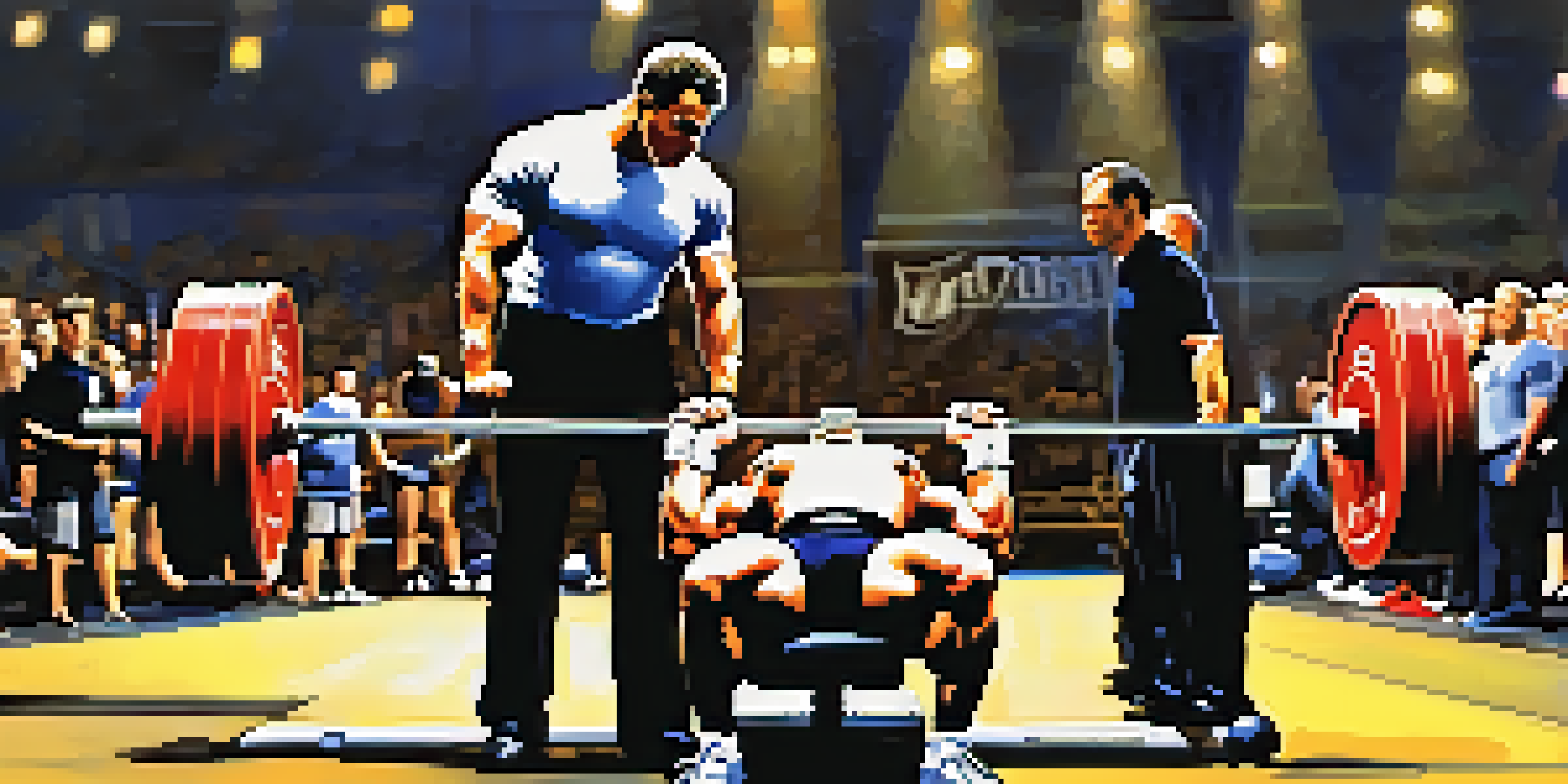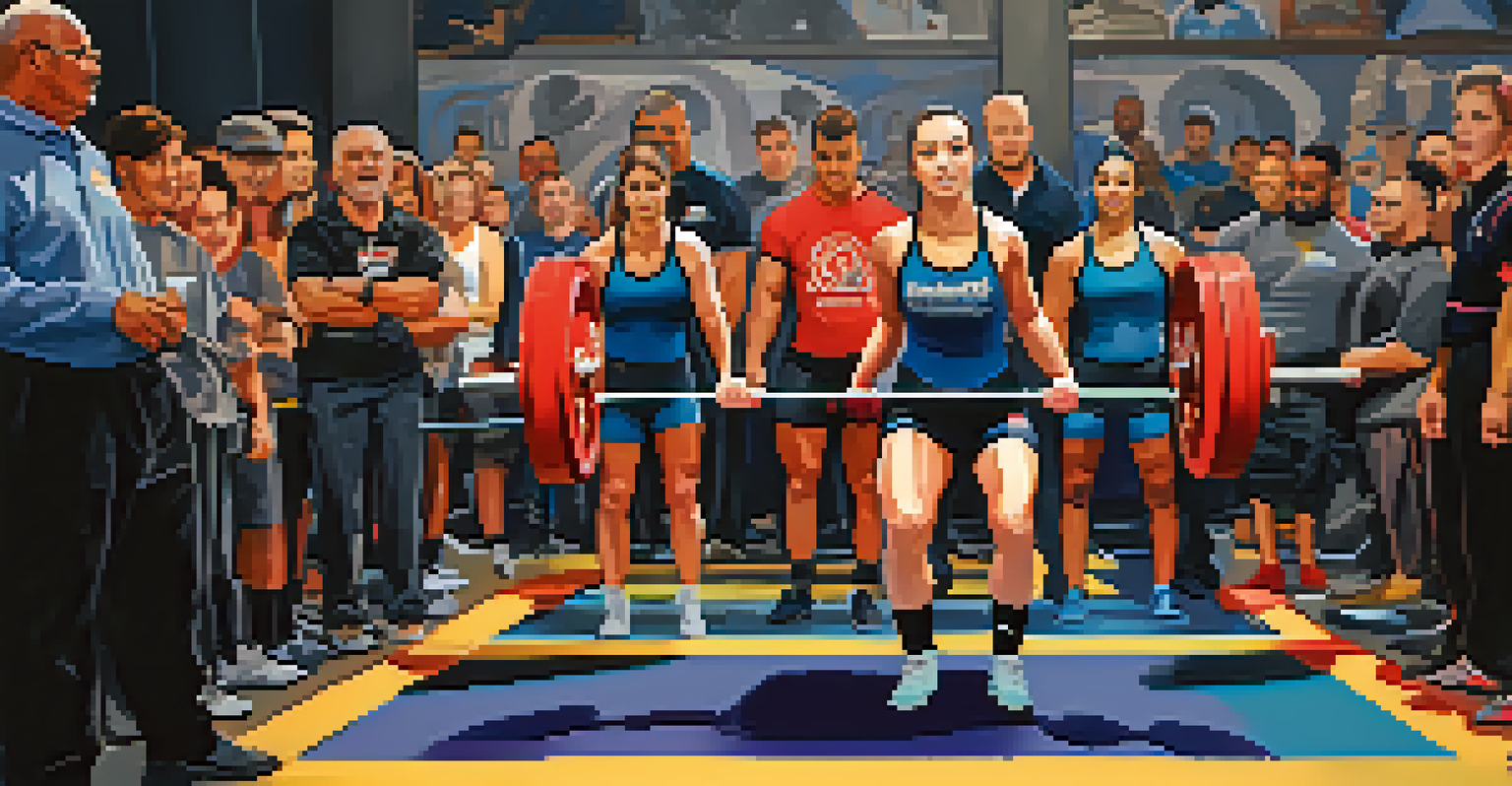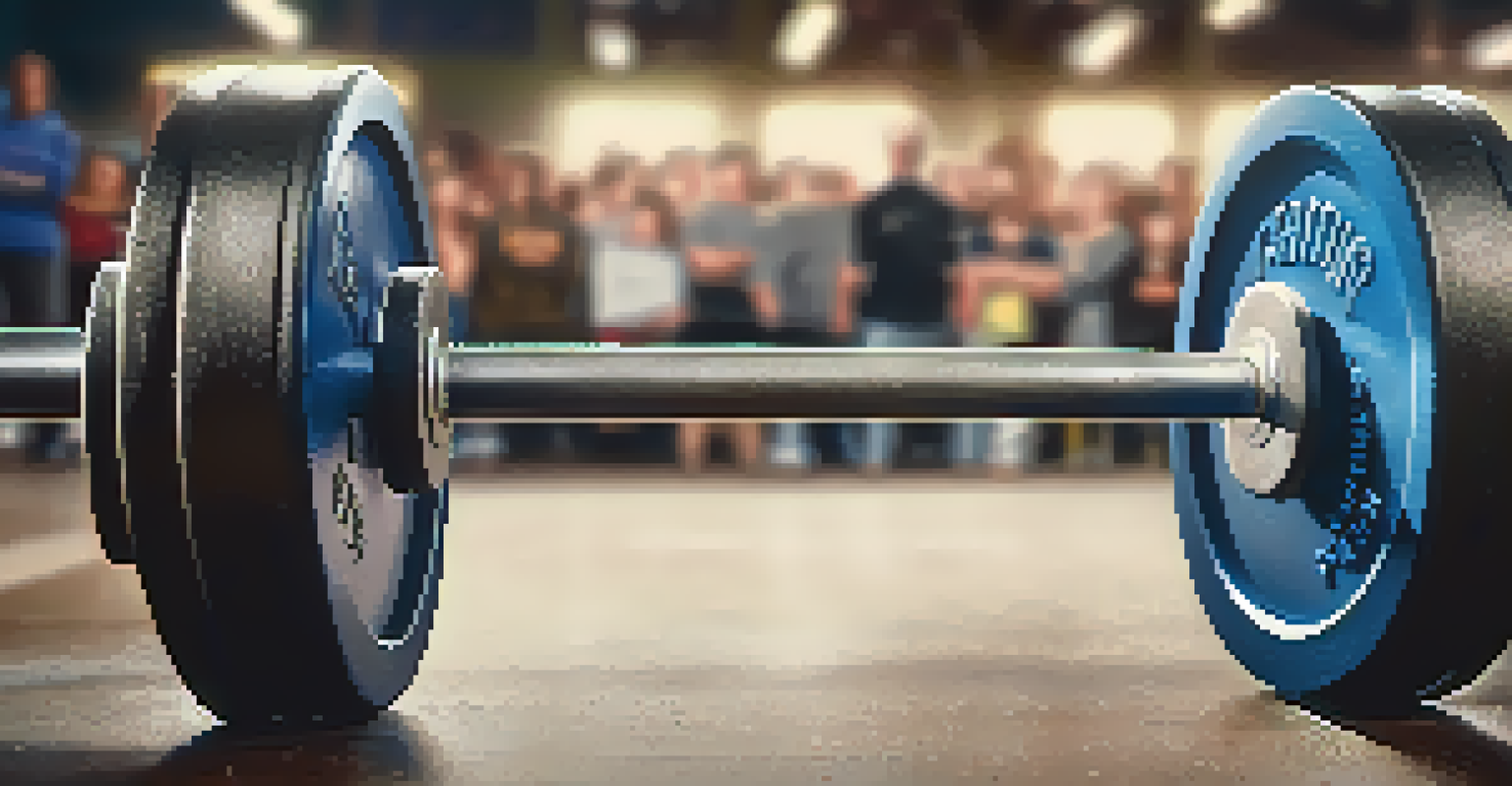How Powerlifting Scoring Works: An In-Depth Explanation

What is Powerlifting and Its Scoring System?
Powerlifting is a strength sport that focuses on three key lifts: the squat, bench press, and deadlift. Each lift is performed in a specific manner, and the goal is to lift the maximum weight possible. Scoring in powerlifting revolves around the total weight lifted across these three attempts, which makes understanding the scoring system essential for both competitors and fans.
Strength does not come from physical capacity. It comes from an indomitable will.
The scoring system is straightforward yet crucial; lifters are given three attempts for each of the three lifts. The best lift from each category is recorded, and the lifter's total score is the sum of these best attempts. This method of scoring not only highlights individual strength but also creates an engaging atmosphere during competitions.
In essence, powerlifting scoring is designed to reward the lifter who can perform consistently across the three lifts, showcasing their overall strength. This creates a fair competition environment where lifters can push their limits while also enjoying the spirit of the sport.
Understanding the Three Main Lifts
The squat, bench press, and deadlift each have their unique techniques and requirements, making them pivotal in powerlifting scoring. For instance, the squat requires the lifter to descend until their thighs are parallel to the ground, and then rise back up, demonstrating lower body strength. Similarly, the bench press emphasizes upper body strength as the lifter must lower the barbell to their chest before pressing it back up.

Deadlifts, on the other hand, are a true test of overall body strength, as the lifter lifts a barbell from the ground to hip level. Each lift has its specific rules and techniques, which are enforced by judges during competitions to ensure fairness and safety. Understanding these lifts is essential, as each one contributes significantly to the overall score.
Powerlifting Scoring Basics
Powerlifting scores are determined by the total weight lifted across three attempts of the squat, bench press, and deadlift.
In powerlifting, mastering the technique of each lift is just as important as the weight lifted. A well-executed lift not only maximizes the score but also minimizes the risk of injury, which is crucial for long-term success in the sport.
The Role of Judges in Powerlifting Scoring
Judges play a vital role in powerlifting competitions, ensuring that each lift is performed according to the established rules. They evaluate lifts based on criteria such as depth in squats, bar control in bench presses, and proper form in deadlifts. Their decisions directly impact the scoring, making their role crucial for maintaining the integrity of the competition.
Success is where preparation and opportunity meet.
Typically, each lift is judged by a panel of three judges, and a majority decision determines whether a lift is considered successful or a 'no lift.' This system helps to eliminate bias and ensures that every lift is evaluated rigorously. Transparency in judging is essential to uphold the sport's credibility and fairness.
Understanding the judges' criteria can help lifters refine their techniques and improve their scores. By knowing what judges look for, competitors can focus on the aspects of their lifts that need improvement, ultimately increasing their chances of success on competition day.
Understanding the Scoring Process
The scoring process in powerlifting begins with the lifter's attempts in each of the three lifts. After each lift, the judges award a decision, which can be a successful lift or a 'no lift.' The lifter’s highest successful attempt from each category is then recorded, and these figures are totaled to determine their final score.
For example, if a lifter successfully squats 200 kg, benches 150 kg, and deadlifts 250 kg, their total score would be 600 kg. This total is what determines their placement in the competition, as lifters are ranked according to their total lifted weight. Thus, every attempt counts, making strategy and planning vital components of powerlifting.
Judges Ensure Fair Competition
Judges are essential in powerlifting, evaluating each lift based on strict criteria to maintain the sport's integrity.
Additionally, lifters often aim to achieve personal records while competing, adding another layer of motivation beyond just winning. This dual focus on personal achievement and competitive placement enriches the powerlifting experience for many athletes.
The Importance of Weight Classes in Scoring
Weight classes are a crucial aspect of powerlifting that ensures fair competition among lifters of similar body weights. Competitors are grouped into different classes, and their scores are compared within these groups. This system allows lifters to compete against others who have similar body sizes, making the competition more equitable.
For instance, a lifter in the 74 kg class wouldn't be directly competing against someone in the 105 kg class. This separation emphasizes skill and strength relative to body weight, rather than raw power alone. It also encourages lifters to focus on improving their lifting techniques and personal bests.
The presence of weight classes not only fosters a supportive environment but also drives lifters to push their limits. Many athletes find motivation in striving for records within their weight category, creating a sense of community and friendly competition among peers.
Understanding Records and Rankings
In powerlifting, records are a significant source of inspiration and competition. Each weight class has its own set of records, and lifters aspire to break them by achieving higher totals than previously recorded. These records can be local, national, or even world records, depending on the level of the competition.
Rankings are also established based on the lifters' totals, allowing competitors to see where they stand relative to others. This system not only motivates lifters to improve but also highlights the achievements of top performers in the sport. It's a way to recognize excellence and encourage continuous growth.
Weight Classes Promote Fairness
Weight classes in powerlifting allow competitors to face off against others of similar body weight, ensuring equitable competition.
Moreover, records and rankings can change frequently as new competitions occur, keeping the excitement alive in the powerlifting community. Lifters often find themselves inspired by those who have come before them, fueling their desire to leave their mark in the sport.
Tips for Competing in Powerlifting Scoring
Preparing for a powerlifting competition involves more than just strength training; strategy plays an equally important role. Lifters should familiarize themselves with the rules, practice their techniques, and develop a plan for their attempts. This preparation can significantly impact their overall score and performance on competition day.
Additionally, mental preparation is crucial. Visualization techniques, where lifters imagine successfully executing their lifts, can enhance focus and confidence. Building a strong support system, whether through coaches or fellow lifters, also contributes to a positive mindset leading up to the competition.

Lastly, lifters should remember that competing is about personal growth as much as it is about winning. Embracing the experience and learning from both successes and setbacks can lead to continuous improvement, making powerlifting not just a sport, but a journey of self-discovery.